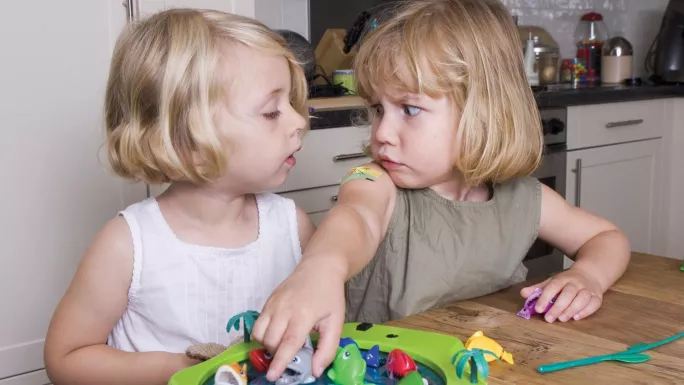TES talks to...Dr Sam Wass

Many parents (and some teachers) use cartoons as a way of pacifying children. Short bursts of Scooby-Doo or PAW Patrol can usually be depended on to keep children engaged long enough for adults to undertake a particular task without being distracted.
But what many adults don’t realise is that cartoons aren’t just effective pacifiers - for young children, they can be an important educational tool, too.
That’s the view of Dr Sam Wass, child psychologist and academic at the University of East London and the University of Cambridge. Wass, who is the co-presenter of The Secret Life of 4, 5 and 6 Year Olds - a new series of which will air on Channel 4 before Christmas - recently helped out on a nationwide survey of six- to 12-year-olds for the Cartoon Network, which looked at, among other things, what individual character traits this age group values.
While the research did throw up some interesting findings - such as that the number one thing that children between the ages of 6 and 12 value in imaginary characters and real-life friends is humour - what was also fascinating for Wass was how different children aged between 4 and 6 are when compared to those in the research group. It reinforced his belief that the youngest children in primary schools need a completely different approach to behaviour management from that for older year groups.
‘Impress their friends’
“Four-year-olds do very much what they want to do,” he explains. “They behave in a simple and honest way and they say what they think. Whereas with a six-year-old, it’s very much about what do they think the acceptable thing to do is and what are the patterns of behaviour that are going to impress their friends?”
“Similarly, when something naughty happens and the teacher comes into the classroom and asks ‘Who did this?’, a four- to five-year-old will almost always give an honest answer. But seven-, eight- or nine-year-old children become fascinated with the idea [of lying]. Once they discover that they can tell a lie to protect the group, they are obsessed about it and they spend ages planning what they will tell the teacher when they come back into the room.”
Another vital difference between four- and five-year-olds and older children is that they don’t break rules for the same reasons. An older child might break the rules to impress their friends but, for a four- or five-year-old, it is usually down to an inability to regulate their emotions.
“When you see a four- or five-year-old who is not sharing a toy, often it’s not because they don’t understand how to do it,” says Wass. “Rather, it’s because emotion regulation and keeping control of yourself when you are in a bad mood is a real challenge for younger children.”
Many adults don’t realise that cartoons can be an important educational tool, too

So what’s the best way that teachers can deal with misbehaving younger children? “Young children really value consistency and reliability in a teacher,” says Wass. “They really value the fact that the teacher doesn’t have up-and-down moods the way a child does.
“Empathy is also important. You have to have the ability to recognise the emotions that a child feels.”
Take that aforementioned example of a younger child who refuses to share toys with other children.
“It’s very tempting to treat that child as if they have been naughty - as if they know what they’re doing and they are doing it very deliberately to annoy the other child or the adult - so you [the teacher] tell off the child and sometimes raise your voice,” Wass explains. “But all of the research suggests that the most common reason why a child would fail to share a toy is because they are upset about something else or they are in a bad mood or they are feeling tired and emotional.
“If a child is feeling tired and emotional, going up and telling off that child is almost always an ineffective way of disciplining that child because it’s just going to make that child more upset, whereas empathising with that child, saying to that child ‘I can see it’s very upsetting, I can see you’re tired, I can see you’re in a bad mood…’ is almost a more effective way of helping a child regulate that behaviour.”
‘Learn about emotions’
Another ineffective way of dealing with younger children would be to sit them down and tell them what to do.
“Young children don’t have the ability to be told what to do and then do it, so if you try to force a very young child to do something, it won’t work and they will get upset and then it becomes an emotional thing,” explains Wass. “The way to start with a child is to let them follow their own interest and then gradually introduce discipline as you go.”
What teachers also need to do, particularly with these younger children who are experiencing a “rollercoaster of emotions every day”, is to help them to recognise and learn about emotions. In doing so, this helps them deal with their own emotions. This is where cartoons can play a key role, says Wass.
“An adult face is very complex and the difference between one emotion and another is very subtle. However, cartoon characters are often drawn with thick black lines so the key features are easier to pull out, and because emotions are exaggerated they’re clearly differentiated. So they learn this extreme example of what surprise looks like on a face and, once they’ve learnt it, they find it easier to recognise surprise in a real-world context.”
So if you’re the sort of parent or teacher who frets about switching on the television and letting a child watch a cartoon, don’t worry - you’re actually helping to prepare them for life in the real world.
Simon Creasey is a freelance journalist. He tweets @simoncreasey2. Dr Sam Wass is ambassador for Cartoon Network Imagination Studios. Children can enter a competition to create a cartoon character, where you can also find free teaching resources.
You need a Tes subscription to read this article
Subscribe now to read this article and get other subscriber-only content:
- Unlimited access to all Tes magazine content
- Exclusive subscriber-only stories
- Award-winning email newsletters
Already a subscriber? Log in
You need a subscription to read this article
Subscribe now to read this article and get other subscriber-only content, including:
- Unlimited access to all Tes magazine content
- Exclusive subscriber-only stories
- Award-winning email newsletters